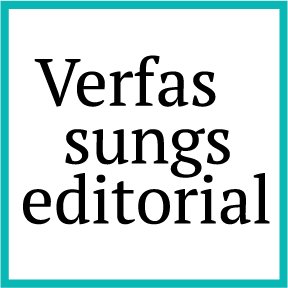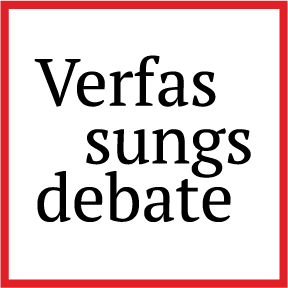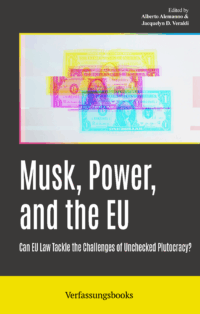The Agonies of American Federalism
Understanding the Los Angeles Conflict in a Historical Frame
On the night of Saturday, June 7, President Trump issued an order directing National Guard troops to Los Angeles “to temporarily protect ICE and other United States Government personnel who are performing Federal functions.” The order calls for two thousand National Guard troops to be deployed for at least 60 days, and authorizes the Secretary of Defense to deploy regular federal troops “as necessary” to augment their work. A deployment of Marines indeed ensued. Tellingly, the memo characterizes the protests – i.e., what would ordinarily be understood to be a core case of First Amendment speech – as “a form of rebellion against the authority of the United States.”
On social media, the President has claimed that the city was “invaded and occupied” by “violent, insurrectionist mobs,” and directed his lieutenants to take any actions necessary to “liberate Los Angeles from the Migrant Invasion.” One of his senior advisors, Stephen Miller, called it “a fight to save civilization.” Such existential language – echoing tropes of the kind employed by Carl Schmitt and his allies a century ago – portends an extended and potentially violent confrontation. Add to this the Administration’s repeated flouting of federal statutes and constitutional norms: A government that does not perceive itself as bound by law or constitution even in the ordinary course of things is a government that is likely far more prone to destabilizing overreach – with unpredictable consequences.
What now unfolds in Los Angeles depends less on the precise statutory authority relied upon by Mr. Trump (the one invoked in the original order is relatively narrowly gauged around the protection of federal officials and properties). Rather, it depends on the pattern of escalation, or (much less likely) de-escalation by people on the ground. There are few American precedents, whether legal or historical, for mapping out or predicting the unfolding conflict. Although President Lyndon Johnson had taken a similar action in March 1965 to protect civil rights protests of racial segregation, his intervention was crucially different: For one thing, it was intended to, and did, protect the First Amendment interests of protesters against state violence. For another, it was not accompanied by the inflammatory rhetoric Trump and Miller have used – rhetoric that likely increases the probability of a tragic and bloody confrontation. Perhaps the closest precedent is the first Trump Administration’s use of federal forces against BLM protesters, especially in Portland, OR (in contrast, the deployment to Louisiana during hurricane Katrina was not contested by the state). Which is hardly auspicious.
++++++++++Advertisement++++++++++++
The Department of Public Law at the Max Planck Institute for the Study of Crime, Security and Law in Freiburg (Breisgau), Germany is seeking to recruit several Postdoctoral Researchers (f/m/div), with the possibility of earning a post-doctoral lecturing qualification (habilitation).
If you’re eager to contribute to cutting-edge research in the areas of public security law, fundamental aspects of public law, or legal philosophy and legal theory, we invite you to apply. For more details and to submit your application, please view our job posting here.
++++++++++++++++++++++++++++++++
As such, the events in Los Angeles pose a threat to one constitutional principle in particular: federalism. In the American constitutional tradition, the devolution of governance to subnational entities has been understood to be a bulwark of democracy. It is one of the “divide and limit” strategies used by James Madison and other designers of the organic document to mitigate the risk of anti-democratic concentrations of power. Here, the active resistance by California’s governor, not to mention the geographic indefiniteness of the order, place that pro-democratic function squarely in doubt.
But the term “federalism” has undergone a series of changes under the American constitution. Since 1797, understandings of the federal-state relationship have continuously evolved. Simplifying somewhat, it is possible to speak of three different hegemonic models of federalism. All of them, however, have been overtaken in recent months – and seem to be overtaken now.
First, it is commonly said that a theory of federal and state actors as “separate sovereigns,” creating a system of “dual sovereignty,” characterized the American constitutional order for the decades after its Founding. There is some truth to this, although my colleague Alison LaCroix tells a more nuanced tale. Certainly, by the 1930s, however, it was clear that this dualist system was dead – broken by the large federal regulatory state that brooked few federalism-related outer bounds and was embraced out of necessity in the crucible of World War II.
Second, the collapse of separate spheres theories opened a space for an influential slate of “process federalism” theories that celebrated political and institutional safeguards baked into the formal and informal structures of political representation. Herbert Wechsler, for example, pointed to the states’ “crucial role in the selection and the composition of the national authority” through the choice of Senators, House districting, and the Electoral College. All these, he suggested, acted as mechanisms that invested federal politicians with reasons not to encroach “on the domain of the states.” A second iteration of process federalism was developed by Larry Kramer, which identified the national political parties as vectors by which states’ interests would be transmitted. While Wechsler’s theory had some influence on the Supreme Court, both his and Kramer’s accounts were criticized for diverging from the actual operation of political institutions. In particular, critics pointed out that parties had become increasingly nationalized, so that they no longer played a role in transmitting local preferences to the capital.
In the second decade of the twenty-first century, a third wave of federalism scholarship broke. This started from a different threshold observation: The federal government and the states worked together to deliver a growing set of goods, ranging from infrastructure, to food and drug regulation, to child and maternal welfare. Within these largely statutory schemes, states worked as “component parts of the national administrative apparatus.” For example, my colleague Bridget Fahey has explained how “cooperative federalism’s administrative law structures the paths states have to express their policy preferences – and their pushback.” She succinctly names this approach “federalism … by integration.”
++++++++++Advertisement++++++++++++

In der Juristischen Fakultät der Ruhr-Universität Bochum ist zum nächstmöglichen Zeitpunkt eine Juniorprofessur W1 Tenure-Track W3 (m/w/d) für Öffentliches Recht und Energierecht zu besetzen.
Verbunden mit der Stelle ist ein Engagement in der Leitung des Instituts für Berg- und Energierecht an der Juristischen Fakultät. Unter dem RUB-Leitbild „Creating Knowledge Networks“ (Profilschwerpunkt Energiesystemtransformation und Ressourcenmanagement) wird eine Zusammenarbeit mit der Wirtschaftswissenschaftlichen Fakultät, der Fakultät für Maschinenbau und dem Research Department Closed Carbon Cycle Economy der RUB erwartet.
Weitere Informationen entnehmen Sie der Stellenausschreibung.
++++++++++++++++++++++++++++++++
What is striking about the second Trump Administration is its repudiation of all three models of federalism in favor of a top-down, authoritarian approach characterized by coercion, demands for subservience, and even violence. The LA deployment is perhaps the most salient and striking example of this approach. But it is hardly alone.
The Administration has withdrawn much-needed federal public goods upon which the states reasonably rely. For instance, in late May, the federal government canceled a contract to develop a new vaccine to protect against flu strains with pandemic potential (including the H5N1 bird flu). Just weeks later, the White House signaled its intent to shutter the Chemical Safety Board, a small but significant scientific body that monitors industrial accidents. These are merely examples: a comprehensive list of drawdowns would take pages.
At the same time, the Administration has weaponized states’ entanglement in cooperative federalism programs and their reliance upon certain forms of federal support, or at least cooperation. It has, for example, threatened to cut off all federal funds to the University of California and the Cal State systems, lest certain culture-war demands be met. Similar demands have been leveled against Maine and California, as well as cities that have so-called “sanctuary” programs (really, rules of non-cooperation with federal immigration authorities). And it has threatened to investigate or sue state officials it views as hostile.
Put these changes together, and you have a dramatic, severe, and politically charged change in the nature of American intergovernmental relations. The national government no longer acts as if it is bound by legal and statutory rules; it treats (ideologically averse) states and localities with contempt and brute economic or military force, and it threatens, or bullies – never negotiates or deliberates together – to achieve what it wants. It doesn’t seem unreasonable to describe this system as closer to feudalism than to federalism as the latter term is now used.
I began by noting the uncertainty as to what will unfold in Los Angeles. But behind that concentrated and specific unknown lies a yet larger question, one that emerges from this more synoptic view. Federalism at minimum assumes a measure of separation and subnational autonomy. The present administration rejects that basic premise. Simply put, therefore, the question now is whether American federalism in any form can survive this Administration.
*
Editor’s Pick
by CHARLOTTE HERBERT

(picture generated by AI)
I am not the first to observe that many stories once considered dystopian no longer feel like dark visions of a distant future. 1984 now reads almost like an everyday scenario; the premise of The Last of Us no longer manages to shock, and some Black Mirror episodes might one day serve as a documentary of technological developments. But rarely has this realisation unsettled me as much as while watching the latest and final season of The Handmaid’s Tale, which no longer feels nearly as dystopian as Atwood’s original 1985 novel. In it, the United States has given way to the authoritarian state of Gilead, where women are valued primarily for reproduction and political dissent is violently suppressed. The final season concludes the protagonist June’s fight against the regime that abducted her daughter. June is strong, outspoken – and above all: angry. Trump would probably recommend her to take an anger management course – but if the past days and months have made one thing clear, it’s that our dystopian world needs more “young angry women.“
*
The Week on Verfassungsblog
summarised by CHARLOTTE HERBERT
Trump’s latest escalation: he deploys National Guard troops in Los Angeles to crush protests – some of them peaceful – against his aggressive immigration policies. This not only poses a direct threat to federalism (as AZIZ HUQ analyses above), but also raises serious constitutional concerns, as EMILY BERMAN (EN) notes.
The Trump Administration’s ongoing dismantling of political and institutional structures is further illustrated by SUSAN ROSE-ACKERMAN (ENG), who argues that Trump not only enriches himself but actively dismantles anti-corruption safeguards in pursuit of a personal vision of kleptocracy.
Meanwhile, Trump also continues his project of international isolation. However, the latest US sanctions against four ICC judges are not unprecedented but rather part of a longstanding American tradition of rejecting international courts, as JEAN GALBRAITH (ENG) observes.
US entry restrictions pursue a similar logic of international isolation. The Supreme Court’s decision upholding the “Muslim Ban” has left many doubtful that legal challenges to such discriminatory travel measures can succeed. Still, ILYA SOMIN (ENG) contends that the constitutional objections remain strong – and too important to ignore.
That new threats require innovative lawyering is further demonstrated by ARMIN VON BOGDANDY and LUKE DIMITRIOS SPIEKER (ENG) who explore how Hungary’s threat to block the renewal of EU sanctions against Russia might be met with a legally grounded neutralisation of its veto.
++++++++++Advertisement++++++++++++

New Call for Applications of the Ph.D. Scholarship Program “Uncertainty”
The interdisciplinary, international Scholarship Program “Uncertainty” by ZEIT STIFTUNG BUCERIUS invites research proposals from Law, Economics, Social Sciences, and the Humanities examining various facets of “Uncertainty”. The program includes scholarships for different stages of Ph.D. research: Start Up Scholarships (six months), Ph.D Scholarships (one to three years), and Dissertation Completion Scholarships (one year). In addition, the foundation fosters interdisciplinary exchange and networking through workshops and annual conferences.
You will find more information on the scholarship program and the application process here.
Deadline: 30.06.2025
++++++++++++++++++++++++++++++++
From the EU this week, attention centred around Advocate General Ćapeta’s opinion in the landmark dispute Commission v. Hungary on the Hungarian “anti-LGBTIQ” law. KONSTANTINOS LAMPRINOUDIS (ENG) explains how the European Commission, given the limited scope of LGBTQI protection in EU anti-discrimination law, seeks to protect minorities by purposefully “camouflaging” non-discrimination concerns in different legal bases.
LENA KAISER (ENG) analyses Ćapeta’s unprecedented findings on justiciability and Article 2 TEU. While welcoming the outcome, she criticises the vague reasoning behind it.
Poland’s presidential election continued to be another key topic this week. WOJCIECH ZOMERSKI (ENG) attributes Nawrocki’s surprising victory to the liberal camp’s loss of credibility: liberal candidate Trzaskowski had attempted to appeal to conservatives by distancing himself from progressive positions – which alienated progressives while failing to convince conservatives.
PAULINA MILEWSKA (EN) fears that Poland may now become part of a growing transatlantic axis of right-wing populism, ultimately playing into Russia’s strategy of dividing Europe.
Germany’s domestic intelligence agency might also inadvertently play into right-wing populism’s hands: its classification of the AfD as a confirmed right-wing extremist endeavour was, according to MICHAEL MEYER-RESENDE (GER), substantively justified – but poorly reasoned, by exaggerating benign statements and downplaying the truly extreme.
Meanwhile, the Higher Administrative Court in Münster addressed the question what weapons the law has against the AfD members with weapons. It found the revocation of a firearms licence for an AfD member to be unlawful. MARC ANDRÉ WIEGAND (GER) considers this legally correct, but calls on the legislature to tighten the reliability requirements for gun ownership.
++++++++++Advertisement++++++++++++
Musk, Power, and the EU: Can EU Law Tackle the Challenges of Unchecked Plutocracy?
(Edited by Alberto Alemanno & Jacquelyn D. Veraldi)
As calls for an EU response to Musk’s actions grow, the question of whether, why, and how the EU reacts remains open. Is Musk’s conduct problematic in terms of disinformation, electoral integrity, abuse of power, or a combination of these factors? This edited volume unpacks whether and how (EU) law may tackle the existence and exercise of unprecedented plutocratic power. The authors explore a multitude of legal avenues, from freedom of speech to competition law, technology law, data protection to corporate taxation.
Now available as soft copy (open access) and in print!
++++++++++++++++++++++++++++++++
To make identification more reliable, law enforcement agencies are placing high hopes in so-called “DNA phenotyping”. ALINA GARSTEIN and RABEA BRENNER (GER) explain why this technology may raise more uncertainties than it resolves – and carries significant risks of discrimination and misinterpretation.
Discrimination was also at the heart of a recent decision by the Berlin Constitutional Court: must the Senate answer parliamentary questions about the first names of German suspects? Although such questions are clearly racially motivated, the majority opinion fails to mention racism at all. TARIK TABBARA and JELENA VON ACHENBACH (GER) discuss the ruling and side with the dissenting opinion, which argues that constitutional anti-discrimination guarantees justify withholding such answers to avoid legitimising racist logic.
MICHAEL NEUPERT (GER) notes another judicially missed opportunity: the Hamm Higher Regional Court’s ruling on the landmark climate case brought by a Peruvian farmer against RWE. Instead of using the case to advance a legal narrative about global responsibility and ownership, the court opted for 139 pages of evidentiary reasoning – as if this were a neighbourhood dispute in a quiet German suburb.
Finally, this week we continued our symposium on “GEAS Reform: Halfway to Implementation” (GER). Detention and deprivation of liberty are key issues. ROBERT NESTLER examines how formal detention powers are expanding – and where de facto detention may arise. DILKEN ÇELEBI, REBEKKA BRAUN and CATHARINA CONRAD warn that recent progress on protecting vulnerable groups may be lost during implementation. KATHARINA STÜBINGER offers an overview of new legal remedies and stresses that their effectiveness, in light of Article 47 of the EU Charter of Fundamental Rights, is non-negotiable. Four further contributions will follow next week.
*
That’s it for this week.
Take care and all the best!
Yours,
the Verfassungsblog Team
If you would like to receive the weekly editorial as an e-mail, you can subscribe here.




